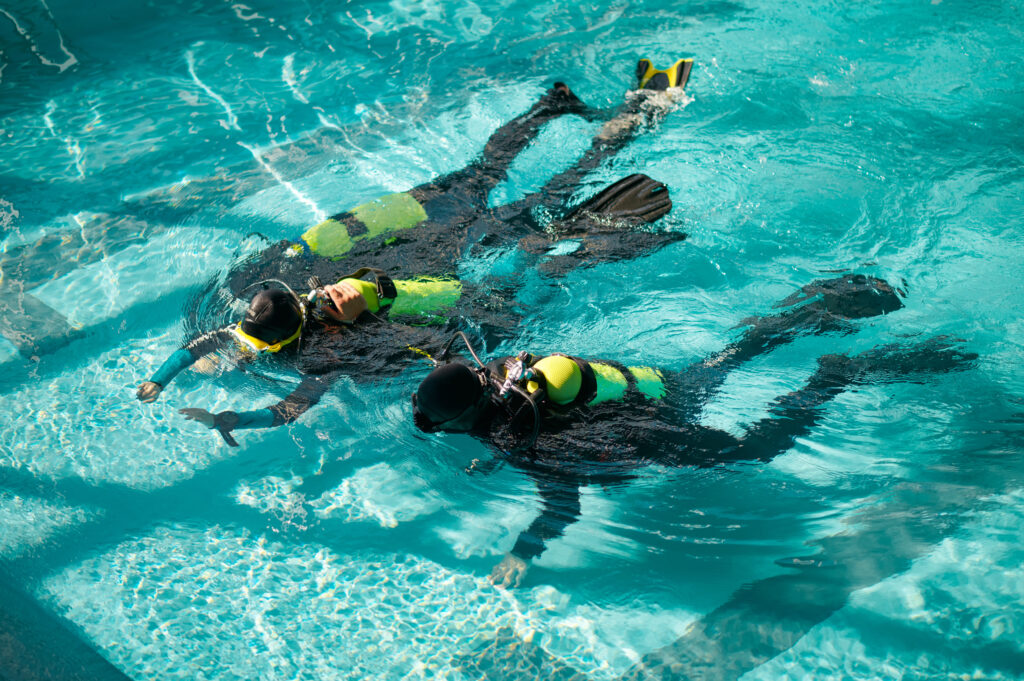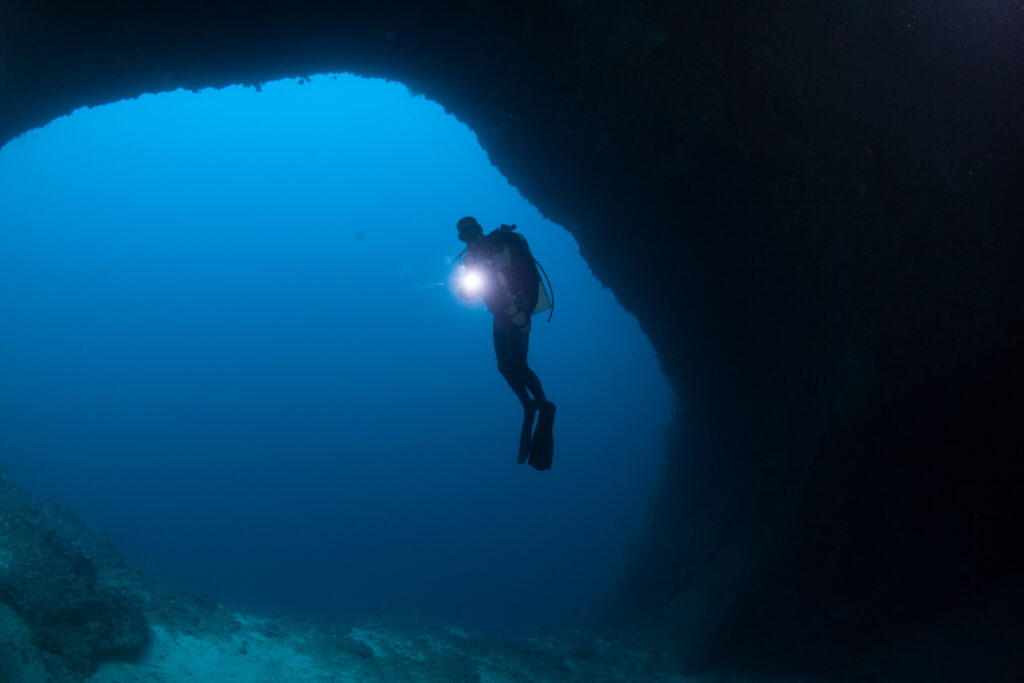What is a Dive Profile?

What is a Dive Profile? A dive profile is a detailed plan that outlines the depth and duration of a scuba dive, including the rates of descent and ascent, and any necessary decompression stops. It is a crucial element in scuba diving that ensures safety by managing the diver’s exposure to pressure changes and the […]
What is Cyanosis?

Cyanosis refers to a bluish discoloration of the skin and mucous membranes caused by an insufficient level of oxygen in the blood. This condition can signal underlying health issues, particularly those related to respiratory and circulatory systems. In scuba diving, cyanosis is a critical indicator that a diver might be experiencing hypoxia, a dangerous reduction in oxygen levels. Recognizing and understanding cyanosis is vital for ensuring diver safety, as it can be a precursor to more severe conditions if not promptly addressed.
What is a Pony Bottle?

A pony bottle, in the context of scuba diving, refers to a small, independent scuba cylinder that acts as an emergency air supply. Divers often rely on pony bottles as a crucial backup system in case their primary air source fails. This additional cylinder provides a diver with an extra layer of safety, ensuring they have enough breathable gas to reach the surface or their dive buddy in the event of an emergency. The name “pony bottle” aptly describes its role as a smaller companion to the main tank, much like a pony is to a horse. Understanding the function and proper use of a pony bottle is essential for any diver who values safety and preparedness underwater.
What is Open Water Certification?

Open water certification is a fundamental credential in scuba diving, signifying that an individual has achieved the necessary skills and knowledge to dive independently. This certification is recognized globally and is a prerequisite for many diving activities and advanced training courses. It ensures that divers are equipped to handle underwater environments safely and responsibly, providing a foundation for safe and enjoyable underwater adventures. Whether one seeks to dive in tropical coral reefs or cold-water kelp forests, obtaining an open water certification is the first crucial step in the journey of underwater exploration.
What is the Primary Second Stage?

The primary second stage, commonly referred to as the ‘primary,’ is a vital component of the scuba diving regulator system that enables divers to breathe comfortably and efficiently underwater. It consists of the mouthpiece and the purge valve and plays a crucial role in ensuring a smooth, controlled air supply from the high-pressure tank to the diver’s mouth. This entry discusses the primary second stage, its various features, and its function in the context of the broader scuba diving experience.
What is a Net Cutter?

A net cutter is a vital tool used by scuba divers to navigate underwater environments safely. This tool is specifically designed to cut through fishing nets, lines, and other entangling materials that may pose a threat to divers and marine life. The use of net cutters is crucial in emergency situations where quick action is required to free a trapped diver or animal. Net cutters are not only essential for personal safety but also play a significant role in environmental conservation by aiding in the removal of abandoned nets, which are harmful to underwater ecosystems.
What is a Kelp Surface Dive?

A kelp surface dive involves swimming and exploring near the surface of the ocean where dense forests of kelp thrive. This activity is popular among divers and marine enthusiasts for its unique opportunity to observe a vibrant and ecologically significant environment. Kelp forests are found in coastal areas worldwide and are known for their towering, underwater canopies. These dives offer an unparalleled chance to witness marine life that thrives within these underwater forests while requiring less equipment and technical expertise than deeper dives. Kelp surface diving is both a recreational pursuit and a valuable method for scientists studying these critical ecosystems.
What is decompression in Scuba Diving?

Decompression is a critical aspect of scuba diving and refers to the process by which a diver transitions from a higher ambient pressure to a lower ambient pressure during their ascent to the surface. This process is essential for the safe elimination of dissolved inert gases, such as nitrogen, from the body’s tissues. Failure to properly decompress can result in decompression sickness (DCS), a potentially life-threatening condition. This entry will discuss the principles of decompression, the physiological implications, decompression procedures, and safety considerations for scuba divers.
What is No Mount Diving?

No mount diving is a specialized form of scuba diving that involves the diver carrying tanks and equipment separately from their body, usually holding or towing them instead of mounting them on a harness or backplate. This technique provides exceptional flexibility and maneuverability, particularly in environments that are too restrictive for traditional scuba gear setups. Originating from the need to navigate through tight underwater spaces, no mount diving has become a valuable technique in underwater exploration and technical diving circles, especially among cave divers and those exploring complex underwater structures.
What is Pressure?

Pressure is a fundamental concept in physics, defined as the force exerted per unit area. In the context of scuba diving, understanding pressure and its effects is crucial for safety and efficiency. Pressure plays a pivotal role in determining how divers experience the underwater environment, affecting everything from breathing to buoyancy. As divers descend into the water, the pressure increases, impacting both their equipment and bodies in significant ways. This article will discuss the principles of pressure, its effects on the human body, the health risks associated with changes in pressure, techniques for managing these changes, and the equipment designed to withstand them.
